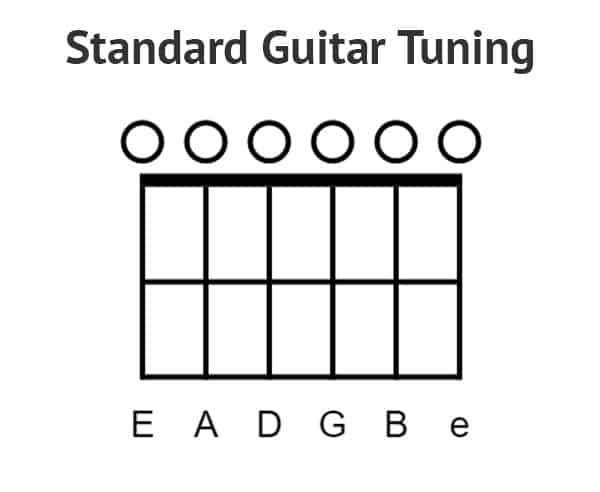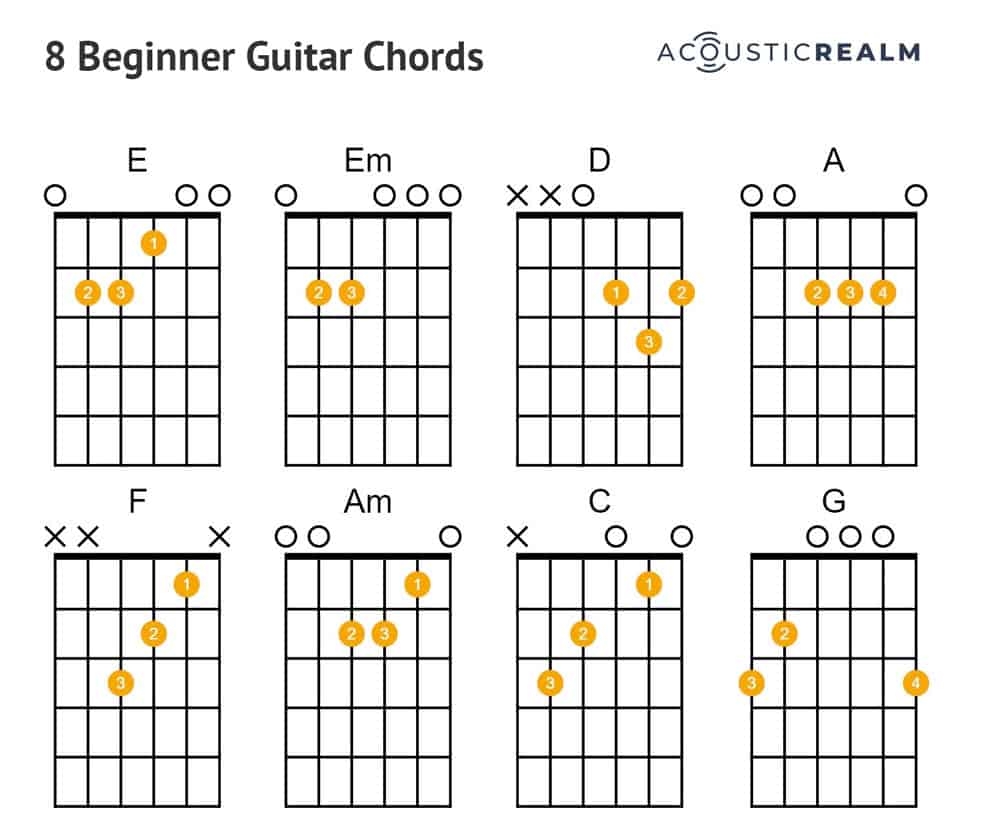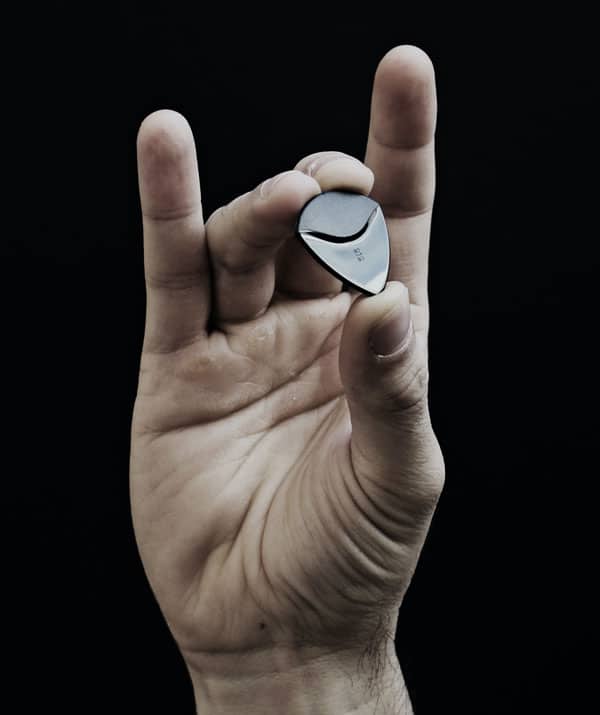
From stress relief to sharpening your brain, learning to play guitar has many advantages.
But it’s easy to get disheartened. According to studies, 90% of guitar beginners give up within their first year.
So how do you become one of the 10%?
You need to approach teaching yourself the guitar the right way. How you learn guitar will also have an enormous influence on how fast you progress.
Going alone is a common method to learn. But you’ll need a bit of guidance.
So what’s the easiest way to teach yourself guitar?
Start with chords like Em, G, C. Once you’ve got the shapes, strum from your elbow. When you know two chords, transition between them. But most of all, practice regularly. Aim to play the guitar 5 days a week. Nowadays, apps, video tutorials, and articles are available to assist your journey.
In this article, you’ll discover what you need to know to get started and which apps and online courses are worth your time.
Beyond the practicalities of saving money, you’ll get a monumental sense of achievement when you can play your first track.
Let’s look at the easiest way to teach yourself guitar.
Table of Contents
The New Way of Learning Guitar
When I learned the guitar, times were different. I used pocket money to buy a magazine which included a CD to play along to.
Now thanks to the internet there’s a wealth of resources at your fingertips. Books and magazines have made way for apps, online courses, and YouTube tutorials.
But which of the online resources will help you out?
It’s a saturated domain and some guitar resources won’t help you. They can cater to different skill levels or work too fast. So, it’s about finding the right resources and thinking outside the box.
The internet is home to many sites to help you. For example, a quick search on Google will bring up a metronome to help you keep time. So, even if you have no budget, there are ways to learn the guitar for free
You have all the tools readily available. Making use of the opportunities will help you achieve your goals.
Let’s look at the best and get your strumming in no time.
9 Fundamental Tips to Learn to Play Guitar by Yourself
1. Tune Your Guitar
Before playing, tune your guitar. This is a good habit to get into. Even playing like Jimmy Page won’t sound good if you’re out of tune.
Tuners come in many shapes and sizes. If you’re on a budget, download one for your phone from an app store. The wonders of modern technology, huh?
The Boss Tuner app available on Android and Apple always does the trick for me.
If you want something more reliable and practical, get one that clips on the guitar neck. This is a superb choice for the beginner because it leaves your hands free.
For electric or electro-acoustic guitars, there are pedal tuners. The Boss TU-3 is a pro tuning pedal used on the biggest stages.
You’ll often come across the term standard tuning. This is the go-to tuning configuration used on guitars. Start with this tuning, look to incorporate different tunings later in your progression.
Standard tuning pitches the strings as E, A, D, G, B, e from the lowest to highest. The lowest string is the thickest string. This can be confusing for beginners.

How to tune a guitar:
- Start by tuning the low E String.
- Turn the tuning key counterclockwise to tighten the strings and raise the pitch.
- To loosen and lower the pitch of a string, turn clockwise.
- If you need a string to pitch an E and it’s currently a D. Tighten the string.
- The tuner display will show when the string is in tune and the resonating note.
- Next tune the A string, then the D, G, B, and finally the high e.
When finished, give it a strum. In time, your ears will identify it as tuned.
2. Familiarize Yourself With Basic Guitar Theory
So now you know the notes of each string, start familiarizing yourself with the guitar. It’s best to know at least the basics of the theory. A deeper understanding will help you in the long run.
It’s daunting, but let’s try to simplify the whole thing. In time, your knowledge will grow, so don’t let yourself become discouraged. Fun fact: Paul McCartney can’t read sheet music.
Play different notes by putting the tips of your fingertips inside the frets. A collection of notes that sound good together is a scale. This is the basis of a guitar solo.
A guitar chord is a set of notes played together at the same time.
3. Learn Guitar Chord Shapes
You might be eager to play solos, but starting with chords is the easiest way to learn.
To do this, you must understand chord diagrams.
Chord diagrams show you how to play chords. When there is a marker on the fretboard, this shows where you should place your finger. A number might be on the markers to show which finger you should be using.
Fingers referenced in chord diagrams:
- Index finger
- Middle finger
- Ring finger
- Pinky finger
The 8 chords below are good first chords to work towards. But let’s start with Em. The ‘m’ is an abbreviation for a minor. The Em only uses two fingers so let’s have a look.

How to play Em chord:
- Place your middle finger on the 2nd fret of the A string. Arch your fingertips to only contact the required strings.
- Then, apply the ring finger to the 2nd fret of the D string.
- Play each note. If there’s a muted string, push your wrist away from the guitar to improve the angle and curl on the fingertips.
Try moving between two chords without strumming. This helps learn transitions without the complications of using your right hand.
4. Learn How to Strum Properly
Strumming is the key to becoming a brilliant guitarist. This is the rhythm and groove of your playing.
You won’t get it straight away and your skills will develop. But let’s look at some key points to get you started. This is from the perspective of a right-handed player.
- Ensure you’re comfortable in a sitting position.
- Rest your right elbow in front of the ridge of the guitar.
- Depending on arm length and guitar size, your elbow will vary in its position. As long as it’s past the rim, you’ll have the freedom to strum. Your elbow will be the pivot to your strumming, so has to pass the top of the guitar.
- Don’t twist your wrist towards the guitar. Keep your wrist parallel to your forearm.
- Strum from your elbow.
- Wrist movement should be small.
The key is fluid movement. Some teachers will tell you to lock your wrist. You should strum with your forearm pivoting from your elbow. But locking your wrist causes rigid patterns. So some minor wrist movement is OK.
5. Use A Pick

It’s worth using a pick also known as a plectrum.
A pick will give your strumming consistency. It’s possible to learn without one. After all, techniques like fingerpicking don’t use a pick.
But it’s the easiest way to learn and you can always ditch it later on. While it may feel like an unnecessary hindrance, it’ll help in the long run.
- Hold it between your thumb and index finger.
- Fold your other fingers out of the way.
- Keep your right straight with the pick protruding from the hand.
- Aim the pick at the strings and brush the strings with the tip of the pick.
Picks come in different thicknesses. Start thin and, as you improve, try to incorporate thicker ones. Thin picks give you a bit of flexibility. A thin pick will be between 40-60 mm or less. Dunlops picks are popular and come in different sizes.
6. Learn Your Favorite Songs
I’ll never forget the first song I played all the way through. It was Wonderwall, and the sense of achievement was astronomical. As an Oasis fan, I knew the song, so it helps to learn something you’re familiar with, but be realistic.
If ‘Stairway to Heaven’ is your favorite song, put that aside and file it in a long-term goal section, you’ll be there soon enough.
Start by playing along with some chords. There are many resources on the internet to help you on your way. Ultimate Guitar has a vast library of guitar tabs.
When you’ve got an idea of how the song goes. Try playing along with it.
Check for YouTube videos. The above video is a play-along to John Denver’s “Take Me Home Country Roads”. It’s a good start as it uses beginner chords.
Playing along will create urgency in your playing. Matching the tempo will help you transition from chord to chord.
7. Make Your Practice Sessions Productive
Don’t let your guitar gather dust. It’s productive practice sessions that’ll help you climb the learning curve. So here are some ideas and tips for productivity during practice.
- Practice somewhere away from distractions.
- Regular practice will go a long way. Aim to pick up the guitar 5 days per week, even if it’s for 15 minutes.
- Try to memorize chords without looking at diagrams.
- Then change chords using your memory.
- Try this without looking at the fretboard. Act on the feeling!
- Experiment with strumming patterns by incorporating upstrokes. Try to hit a downstroke on the first beat of a bar.
- If you fancy yourself as a lead guitarist, learn tabs once you have the chord basics.
- Play music that you enjoy.
- But if it gets stale, try experimenting with different genres.
- Keep challenging yourself and practice what you can’t yet do.
- Record yourself to see how you’re getting on. You don’t need a home studio, use your phone.
- But most of all—have fun!
8. Use The Resources Available
Teaching yourself guitar has never been easier. Many platforms offer services for free. YouTube has endless videos and search engines are on hand to offer solutions should you encounter problems. That said, don’t become too reliant and allow yourself time to practice away from the screen.
9. Be Patient
Be patient! It doesn’t happen overnight. If you hit a stumbling block, try a different chord or song to match your current ability.
5 Pitfalls of Learning to Play Guitar by Yourself
Teaching yourself the guitar has its pitfalls. Let’s highlight some negatives so you can avoid the damaging effects.
1. Lack of Structure
If you have lessons, chances are they’ll be on the same day of the week and at a set time. The weekly routine offers a consistent learning pattern. If you’re going alone, try introducing a routine and practice on set days.
2. Procrastination
You’re going to need the commitment to overcome this, especially if learning on a smartphone or computer. The internet is full of distractions, so stay strong and focused on the goal.
3. No Personalized Learning
Most online courses won’t interact with you. So when you’re making mistakes you may not notice and if you do, you’ll have to figure out solutions yourself.
This is how bad habits develop, so use search engines to help find solutions. Use Reddit or comment on YouTube videos if you have a specific issue.
4. Developing Poor Posture
Pick up the guitar, it’s that simple. Not quite. It’s a common mistake that, if not rectified early, it’ll become permanent and difficult to sort. Keep your shoulders back and don’t hunch. Top tip, a footstool can help some players with comfort and keep the guitar in place.
5. Not Knowing How and Why
I’ve toured in front of sizable crowds and recorded albums, all while not knowing guitar theory. Don’t get me wrong, I knew what chords worked together, but I didn’t know why they worked. It was only years later when I had piano lessons that I understood music theory. I had to regress to go forward as a player. This was because I was eager to play and I didn’t want to ‘learn’. Although it’s boring compared to loud amps and distortion, don’t neglect music theory, it’ll help you in the long run.
The Best Apps to Teach Yourself Guitar
The big positive to learning from an app is accessibility. You have everything you need on a smartphone, so your practice sessions will work around your schedule.
Also, it’s cost-effective. Apps are inexpensive and sometimes free, while every session with a tutor will cost.
But, with only an app, you risk picking up bad habits. Whether that’s posture issues or shaping the chords incorrectly, no one is there to pull you up. Another con of an app is that you can’t ask questions. If there’s something you don’t understand, you’ll have to solve your puzzles. An instructor is on hand offering tips throughout the journey.
Yousician
Yousician is an innovative app. A big negative of using apps is the inability to know where you are going wrong. So, Yousician designed an app to combat this. By listening through the microphone of a smartphone, the app guides and gives you feedback in real-time.
From basics to more advanced techniques, Yousician covers many skill levels. There’s a free trial but after that, you need to pay. For a yearly subscription, it costs $9.99 per month, or to pay monthly it costs $19.99.
Guitar Tricks
Guitar Tricks has a step-by-step process allowing for personalized progression.
Once you’ve got the fundamentals, pick from different genres. The sheer volume of tracks to learn is a big plus. With over 1,000 songs with fresh additions daily, there are plenty of options.
Many of the songs to learn are in the classic rock genre. Contemporary players who want to learn pop songs will find it limited.
The Best Online Course
Many of the pros and cons of learning on an app apply to online courses. Furthermore, most online courses have app access too.
Learning from an online course allows you to go at your own pace with a structure. Also, you’ll have many options because the internet is full of sites to help you learn. Online YouTube tutorials are a free alternative if you don’t want the expense.
Fender Play
It’s safe to say Fender knows their way around a guitar. So when they introduced Fender Play, it quickly became a go-to learning resource.
Fender Play has the feel of a one-to-one session. The presenters are great and work at a pace slow enough to follow.
For the beginner, Fender Play is an ideal starting point to grasp the basics. You’ll find explanations on the essentials like how to hold the guitar. If you’re a more advanced player, Fender Play will not be your best option.
ArtistWorks Guitar
While Fender Play will get you started, what about the intermediate player? ArtistsWorks Guitar will help you along those next stages.
Paul Gilbert runs through some more complex tutorials to help you learn lead techniques. But this service offers a personal touch. Upload your videos and experts will offer pro feedback and give you hints to improve.
Beginners will find Fender Play more suitable, but if you’re ready to take the next step, it’s a top pick.
Conclusion
The best way to teach yourself guitar depends on you. The tips in this article give you the foundations to build on. Start with chords, then incorporate more shapes into your armory.
Learning curves vary from player to player. Some find self-teaching easy, while others will need more guidance. This is when to have a look at Fender Play, which I think is the best of the bunch because of the quality of tutorials.
But remember, whichever way you go, there’s no replacement for consistent practice. You’ll get your rewards if you put in the time and effort.
This is a long-term journey and if you plateau, look at alternative lessons or try new techniques.
It’s tough, but once you nail that first song it’ll be worth it.
Happy playing!
Drawing on over 15 years of experience in the music industry, Neal’s writing specializes in all aspects of music. A self-taught guitarist who’s passionate about words, he’s at peace when songwriting. He finds comfort recording, traveling, and wearing his favorite leather jacket. Keep up to date on Twitter @TheNealSawyer
